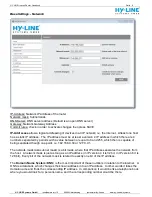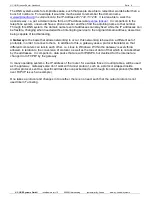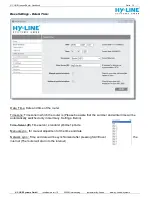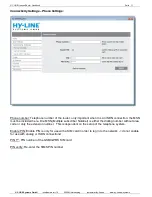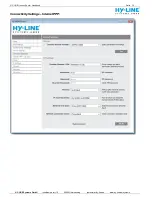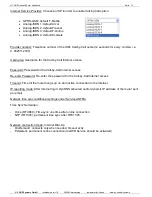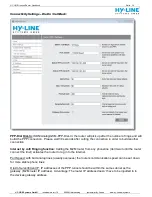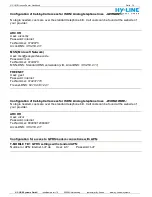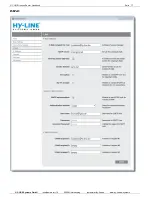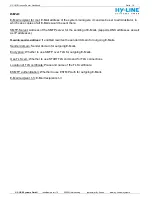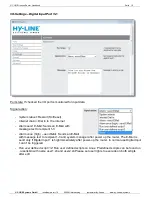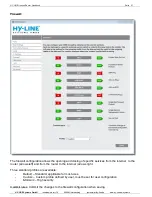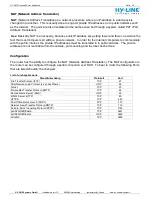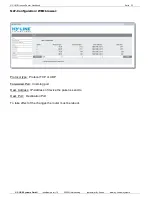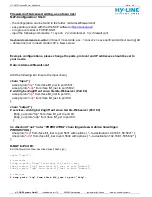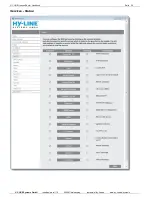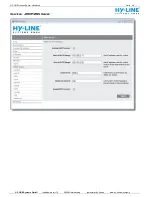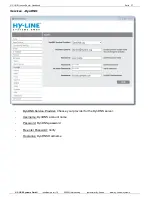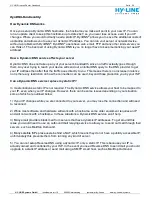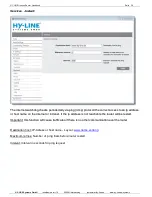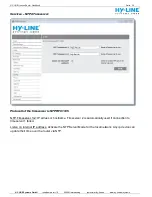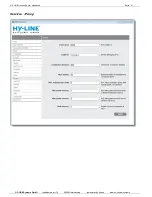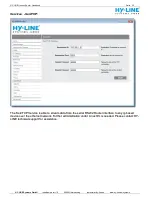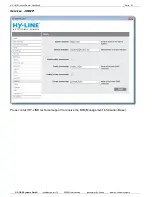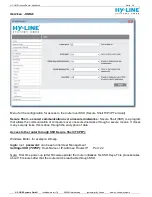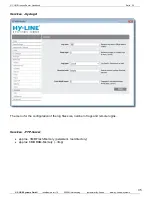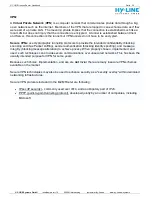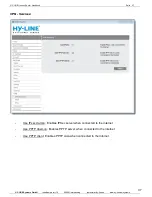
HY-LINE truecon Router Handbuch Seite 22
HY-LINE Systems GmbH
Inselkammerstr. 10 82008 Unterhaching systems(at)hy-line.de www.hy-line.de/systems
N
N
A
A
T
T
(
(
N
N
e
e
t
t
w
w
o
o
r
r
k
k
A
A
d
d
d
d
r
r
e
e
s
s
s
s
T
T
r
r
a
a
n
n
s
s
l
l
a
a
t
t
i
i
o
o
n
n
)
)
NAT
(Network Address Translation) is a network procedure where an IP-Address in a data pack is
changed in to another. This is usually done to support private IP addresses on to public networks such
as the internet. The ports are also translated in the same sense but through a system called PAT (Port
Address Translation).
Use
: Basically NAT is a necessity, because pubic IP address are getting fewer and fewer, as well as the
fact that most computers sit within a private network. In order for the internal computers to communicate
with the public internet, the private IP addresses must be translated in to public address. The private
address are not reachable from the outside, port scanning and the like cant be done.
C
C
o
o
n
n
f
f
i
i
g
g
u
u
r
r
a
a
t
t
i
i
o
o
n
n
The router has the ability to configure the NAT (Network Address Translation). The NAT configuration in
the router can be configured through a serial connection over SSH. To bear in mind, the following Ports
that are listed shouldn’t be changed:
List of unchagable ports
Dienst/Anwendung
Protokoll
Port
File Transfer Protocol (FTP)
TCP
21
SSH Remote Login Protocol (ex. pcAnyWhere)
UDP
22
Telnet
TCP
23
Simple Mail Transfer Protocol (SMTP)
TCP
25
Domain Name Server (DNS)
UDP
53
WWW Server (HTTP)
HTTPS
TCP
TCP
80
443
Post Office Protocol ver.3 (POP3)
TCP
110
Network News Transfer Protocol (NNTP)
TCP
119
Point-to-Point Tunnelling Protocol (PPTP)
TCP
1723
pcANYWHEREdata
TCP
5631
pcANYWHEREstat
UDP
5632
WinVNC
TCP
5900

